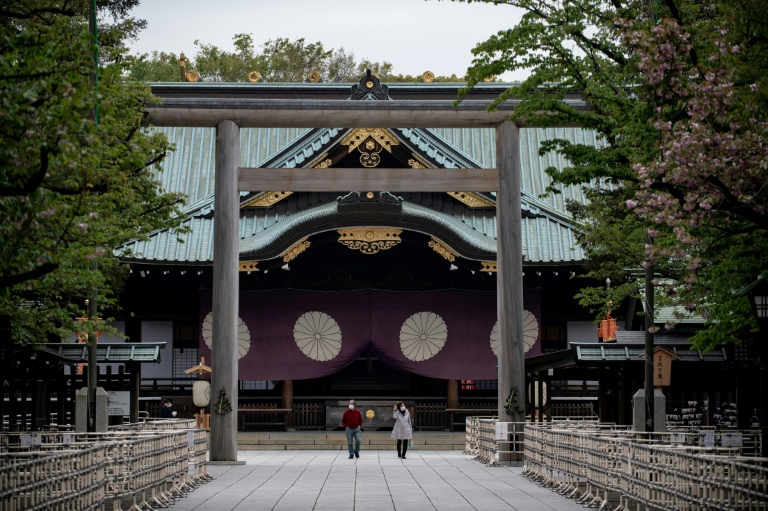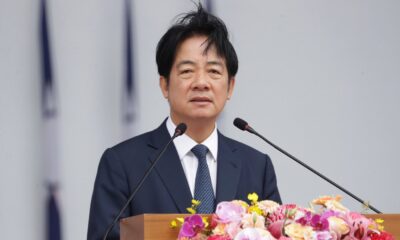Top Stories
Japan’s PM Hopeful Takaichi Sidesteps War Shrine Amid Crisis

UPDATE: In a significant political move, Japan’s ruling party leader, Sanae Takaichi, has opted not to visit the controversial Yasukuni Shrine as she navigates a complex political landscape in her quest to become the country’s first female prime minister. This decision comes amid intensifying political negotiations following the collapse of her party’s ruling coalition just days ago.
Takaichi, who was elected leader of the Liberal Democratic Party (LDP) on October 4, 2023, is now in critical discussions to form a new alliance with the Japan Innovation Party (JIP). The urgency of these talks is heightened by the impending parliamentary vote expected to occur on Tuesday, which could determine her ascension to the premiership.
Her decision to send an offering to the shrine rather than visit in person is seen as a strategic move to avoid provoking diplomatic tensions with neighboring countries, particularly China and South Korea, which have historically reacted strongly to such visits. Takaichi, a known conservative and vocal critic of China, has previously visited the shrine but is now prioritizing her political ambitions and the fragile state of international relations.
The last prime minister to visit Yasukuni was Shinzo Abe in 2013, and no leaders have followed since, reflecting the sensitive nature of the site, which honors war criminals among others. Takaichi’s mentor, Abe’s legacy looms large as she seeks to forge her path amidst a shifting political environment.
The stakes are high as Takaichi aims to become Japan’s fifth prime minister in as many years, especially with a visit from US President Donald Trump scheduled for the end of October. Key issues, including unresolved trade negotiations and Trump’s insistence on Japan halting Russian energy imports while increasing defense spending, are pressing matters that could impact Takaichi’s potential leadership.
The recent coalition collapse occurred on October 10, 2023, when the LDP’s long-time partner, the Komeito party, severed ties over allegations of mishandled party funding following a damaging scandal. In response, the LDP has initiated talks with the JIP, aiming to secure a new coalition. However, they are still two seats short of a majority, creating additional challenges.
While Takaichi requires majority support from MPs to ascend to the role of prime minister, she could succeed in a runoff scenario with a simple majority against a rival candidate. This potential for a divided opposition adds a layer of complexity to her strategy.
“I believe we made progress on advancing the sense of mutual trust,” stated Fumitake Fujita, co-head of the JIP, acknowledging both the alignment and differences in policy perspectives between the two parties.
As negotiations continue, the political landscape remains fluid. Observers are keen to see how these developments unfold, particularly with the pressure of Trump’s upcoming visit. Takaichi faces a critical period where every decision could shape Japan’s future leadership and its international relations.
With less than a week until the parliamentary vote, all eyes remain on Takaichi and her ability to navigate this tumultuous political climate. Stay tuned for further updates as this story develops.
-

 Politics4 weeks ago
Politics4 weeks agoSecwepemc First Nation Seeks Aboriginal Title Over Kamloops Area
-

 World5 months ago
World5 months agoScientists Unearth Ancient Antarctic Ice to Unlock Climate Secrets
-

 Entertainment5 months ago
Entertainment5 months agoTrump and McCormick to Announce $70 Billion Energy Investments
-

 Science5 months ago
Science5 months agoFour Astronauts Return to Earth After International Space Station Mission
-

 Lifestyle5 months ago
Lifestyle5 months agoTransLink Launches Food Truck Program to Boost Revenue in Vancouver
-

 Technology3 months ago
Technology3 months agoApple Notes Enhances Functionality with Markdown Support in macOS 26
-

 Lifestyle3 months ago
Lifestyle3 months agoManitoba’s Burger Champion Shines Again Amid Dining Innovations
-

 Top Stories2 months ago
Top Stories2 months agoUrgent Update: Fatal Crash on Highway 99 Claims Life of Pitt Meadows Man
-

 Politics4 months ago
Politics4 months agoUkrainian Tennis Star Elina Svitolina Faces Death Threats Online
-

 Sports5 months ago
Sports5 months agoSearch Underway for Missing Hunter Amid Hokkaido Bear Emergency
-

 Politics5 months ago
Politics5 months agoCarney Engages First Nations Leaders at Development Law Summit
-

 Technology5 months ago
Technology5 months agoFrosthaven Launches Early Access on July 31, 2025





















